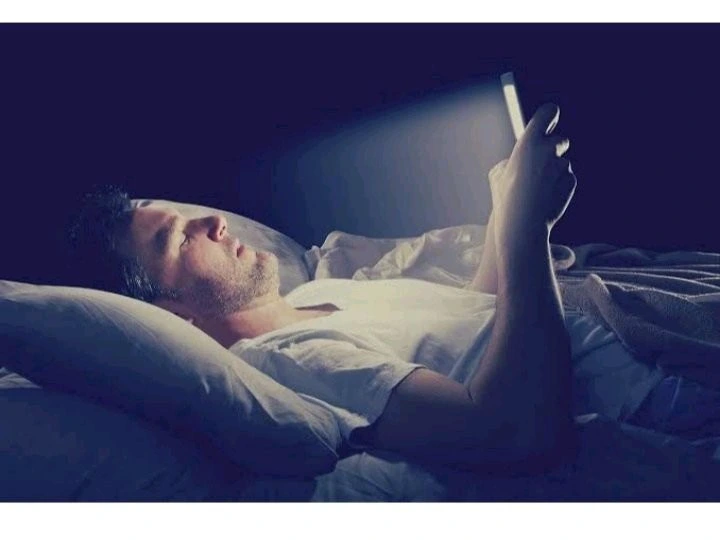WWW.SOLUTIONFANS.COM - MASTER OF ALL EXAM RUNS
In our modern digital age, computer screens and smartphone displays have become ubiquitous companions, offering convenience and connectivity like never before.

However, the convenience comes with a price – the potential dangers of prolonged exposure to blue light emitted by these devices. Blue light, a high-energy visible (HEV) light, has been identified as a potential culprit in causing a range of eye-related issues. In this article which is in accordance to healthline, we delve into the mechanics of blue light, its sources, and its impact on human eyes. By understanding the risks associated with blue light exposure, we can take informed steps to protect our visual health in an increasingly screen-centric world.
Understanding Blue Light
Visible light is composed of different colors, each with its own wavelength and energy level. Blue light, with a wavelength of 380 to 500 nanometers, has one of the shortest wavelengths and the highest energy. This high-energy blue light is prevalent in sunlight and is also emitted by various artificial light sources, including digital screens.
The circadian rhythm, our body’s internal clock that regulates sleep-wake cycles, is influenced by natural light. Blue light exposure during the day helps keep our circadian rhythm in sync, promoting alertness and wakefulness. However, the problem arises when our exposure to blue light extends well into the evening, disrupting the body’s natural sleep-wake cycle.
Dangers of Prolonged Blue Light Exposure on Human Eyes
Digital Eye Strain: Staring at computer screens and smartphone displays for extended periods can lead to a condition known as digital eye strain or computer vision syndrome. Symptoms include dry eyes, headaches, blurred vision, and eye discomfort. Blue light emitted by screens contributes to these symptoms by causing the eyes to work harder to focus and reducing the frequency of blinking, which leads to dryness.
Retina Damage: The cornea and lens of the eye are effective at blocking UV rays from reaching the retina, but blue light passes through these barriers. Some studies suggest that prolonged exposure to blue light may cause damage to the retinal cells, increasing the risk of age-related macular degeneration (AMD), a leading cause of vision loss in older adults.
Disruption of Sleep Patterns: The blue light emitted by screens interferes with the body’s production of melatonin, a hormone that regulates sleep. Exposure to blue light in the evening, particularly before bedtime, can disrupt the sleep-wake cycle and lead to difficulties falling asleep. This is especially concerning in a society where screen time before sleep is common.
Increased Risk of Cataracts: Prolonged exposure to blue light may also increase the risk of developing cataracts, a clouding of the lens of the eye that impairs vision. While cataracts are commonly associated with aging, excessive exposure to UV and blue light can expedite their formation.
Digital Macular Degeneration: Digital macular degeneration is a term used to describe the potential impact of prolonged screen time on the macula, a small area at the center of the retina responsible for sharp vision. Some research suggests that blue light exposure may contribute to the development of this condition, which can lead to central vision loss.
Protective Measures Against Blue Light Exposure
Blue Light Filters: Many devices now offer blue light filters or night mode settings that reduce the amount of blue light emitted by the screen. These filters can be manually adjusted or set to activate automatically during the evening hours to minimize disruption to sleep patterns.
Screen Time Management: Practicing screen time management is essential, especially before bedtime. Reducing screen exposure at least an hour before sleep can help mitigate the negative impact of blue light on sleep quality.
Anti-Reflective Coatings: Prescription eyeglasses and computer glasses can be fitted with anti-reflective coatings that help reduce glare from screens and filter out a portion of blue light.
Use of Blue Light-Blocking Glasses: Blue light-blocking glasses are designed to filter out or absorb a significant portion of blue light emitted by screens. These glasses can be worn while using digital devices to reduce eye strain and minimize blue light exposure.
Lighting Control: In indoor environments, consider using warm or natural light sources instead of harsh, cool white lights. This can help create a more balanced lighting environment and reduce the overall blue light exposure.
Regular Eye Exams: Regular eye examinations by an eye care professional are crucial for identifying and addressing any potential eye-related issues. An eye care provider can also provide recommendations on protective measures specific to your visual needs.
also don't forget to leave a Reply, we would very MUCH appreciate Your Comments On This Post Below. Thanks!

